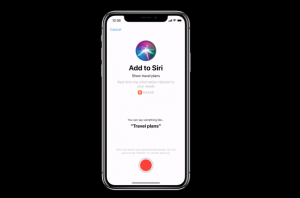It’s been a rough summer for e-cigarettes. Once sold as the safer alternative to traditional, combustible cigarettes, e-cigs are now associated with a national outbreak of mystery respiratory illnesses, six deaths, and a fraudulent marketing campaign.
The Centers for Disease Control have advised people to stop vaping, and in September the Food and Drug Administration sent a stern warning to Juul, the largest American e-cigarette brand, to stop advertising its products as safe ways to quit smoking. The Trump administration even announced plans to ban flavored e-cigs. But as a new paper published this week in JAMA Internal Medicine shows, the FDA has done a poor and inconsistent job protecting the public from new tobacco products in the first place. “It’s really demonstrating a regulatory failure,” says Sven Jordt, an e-cigarette researcher at Duke who authored the paper.
This paper only looked at one ingredient in mint and menthol e-cigarette juice, but it points to a larger game of cat and mouse that the tobacco industry has been playing with regulators for more than a century—a game that has consistently limited the FDA’s authority, ignored scientific research, and marshalled courts and lawmakers against strong regulation. And the techniques that protected tobacco in the 1900s, 1960s, and 2000s ultimately led to the unchecked proliferation of under-studied and potentially dangerous new nicotine products now used by millions of American teenagers.
We’ll explore the wily machinations of big tobacco in a moment, but first let’s look at what this particular study found. Jordt and his colleague Sairam V. Jabba looked at five popular e-cigarette brands that contain a toxic chemical called pulegone, a carcinogen that can also cause liver and kidney failure. Then they calculated the risk of pulegone exposure for a vaper by dividing the safe level of exposure listed by the FDA by the amounts included in each e-cig. They found that mint- and menthol-flavored e-cigarettes contain extremely high levels of the chemical. Ingested in very large quantities, pulegone can be deadly; the chemical is banned in the European Union and in California. “If these amounts were in food, FDA would immediately ask the manufacturer to pull this off the markets or even impose fines,” Jordt says.
Jordt and Jabba found that the levels of pulegone in e-cigarettes were thousands of times higher than the amounts that would be acceptable in food products. E-cigs even had levels several thousand times higher than the concentrations in regular menthol cigarettes. The FDA doesn’t regulate tobacco and food the same way, and Jordt acknowledges that there are no studies that evaluate how inhaling pulegone affects the body. But, he says, the lungs are much more delicate and susceptible to toxins than our digestive systems, and regulatory agencies usually accept that inhaling a chemical will double the risks of exposure. The FDA has strictly regulated carcinogens in food since the 1920s but, Jordt says, “In e-cigarettes there’s basically currently no serious regulation.”
Indeed the FDA’s tenuous and questionable control over the tobacco industry traces back to the administration’s origins. The FDA actually emerged out of the outrage over Upton Sinclair’s 1906 book The Jungle, which shocked Americans with gory details of the unregulated meatpacking industry. The new regulatory body had a mandate to oversee everything from over-the-counter drugs and blood transfusions to food and, after 1938, cosmetics. But not tobacco.
Tobacco had long been considered a drug whose smoke could, like the sanitizing power of fire, stop infections. It was prescribed for toothaches, skin conditions, and the plague. But after Congress established the FDA, tobacco companies worked hard to make sure their product wouldn’t be considered a drug and therefore wouldn’t fall under the administration’s purview. In later years, the industry pressured senators and congressional representatives from tobacco-farming states to limit the FDA’s control over the product.
“The cigarette industry has been very good at staving off regulation,” says Robert Proctor, a professor of the history of science at Stanford who has written about the tobacco industry. “Imagine the oddity that for over a century the world’s leading cause of death was entirely unregulated.” Proctor compares the tobacco industry’s lobbying efforts to the National Rifle Association in terms of their power and reach.
And yet cigarettes are one of—if not the—most dangerous products you can legally buy. They kill half a million Americans every year. How have they enjoyed so much regulatory freedom for so long? Lawsuits. Tobacco companies including Altria, which owns 35 percent of Juul, use litigation early and often. The strategy serves dual purposes: Lawsuits cost the FDA a lot of time and energy to defend against, and they delay the regulations, which are often put on hold as cases wind their way through the courts.
The FDA did try to regulate tobacco back in the mid-1990s, but the tobacco companies sued and won. The Supreme Court ruled that while cigarettes are a serious problem, the FDA had no authority to step in. In 2013 the FDA tried to slap more intense, graphic warning labels on cigarette cartons. A District of Columbia circuit court ruled against them again, calling it a violation of the tobacco companies’ First Amendment rights.
The FDA got a little control over tobacco in 2009, when the Obama administration passed the Family Smoking Prevention and Tobacco Control Act, which finally, explicitly, gave the administration jurisdiction over tobacco. But the law grandfathered in all old cigarette and tobacco products. The FDA couldn’t review the safety of products that had been on the market before 2007. All it could do was make sure that any new products were safe.
E-cigarettes, as it happens, appeared on the market in 2007 just late enough to be subject to FDA safety reviews. But at first they didn’t seem to be a problem. Shaped like USBs and sold as safer alternatives to smoking, e-cigarettes appeared to be a promising tool to help adults stop smoking. They didn’t combust like traditional cigarettes and they didn’t have any tar. They were a global hit. From 2011 to 2018, the number of vapers in the world more than quadrupled from 7 million to more than 40 million.
They were especially popular among kids. In the US, a recent NIH survey shows more than a third of US high school seniors currently use e-cigarettes, many attracted by sickly sweet flavors like Watermelon Cotton Candy, Cookie Twist Banana Oatmeal, Bougie Apple, and Cheap Thrill. (Ew.) Vaping is inconspicuous and easy for high schoolers who can take little puff on the way from biology to Spanish and arrive smelling innocently of bubble gum. E-cigarettes have also been expertly marketed to teenagers, through social media campaigns and even classroom presentations sponsored by Juul that promised vaping is much safer than smoking. (Those claims have proved to be both unfounded and patently false: The products are highly addictive and contain enough nicotine to cause seizures. They’re also linked to a host of illnesses including stroke and emphysema. And e-cigarette flavorings like butter, cherry, and cinnamon can cause acute lung injury and airway irritation.)
As the popularity of “juuling” surged and the Surgeon General labeled the phenomenon an epidemic, the FDA was slow to catch up. The administration didn’t review e-cigarettes before they appeared in stores, and didn’t even propose any regulations for the products until 2014. It took another two years of public comment periods for those proposed rules, which restricted e-cigarettes to buyers older than 18 and required e-cigarette companies to share their ingredients with the FDA (something many companies still haven’t done), to become rules in 2016. “It was a failure of the FDA to recognize the potential dangers of this product,” says Lauren Lempert, an e-cigarette researcher at UC San Francisco.
The 2016 regulations also set up a process for pre-market review. Before any new e-liquids or pens go on shelves, the FDA now assesses whether they’re safe. For products like Juul, which are already on the market, the deadline for approval from the FDA has been consistently moved back. Finally, after public health groups concerned about vaping sued the FDA, Commissioner Ned Sharpless moved up the deadline to May 2020. A vaping industry group filed a suit in August to move it back again, calling the deadline “arbitrary” and “impossible to meet.” In the meantime, Juul and other products are allowed to stay in stores.
A spokesperson for the FDA wrote via email that the administration is working “diligently and expeditiously to regulate this rapidly evolving class of new tobacco products,” noting it has sent out thousands of warning letters to online and brick-and-mortar stores that sold e-cigarettes to underage users. It has also gone after companies using misleading labels and failing to print mandatory nicotine warning labels.
Meredith Berkman, cofounder of the advocacy group Parents Against Vaping, says she’s grateful the FDA is finally taking action. But she also feels that the FDA “failed” parents. “Essentially, our kids have been used as guinea pigs by the e-cigarette companies,” she says. “I wish they had acted a lot sooner.” The FDA, for its part, is hamstrung by the weight of bureaucracy and the threat of a legal challenge.“ They know anything they do is going to involve an army of lawyers,” says Sarah Milov, a tobacco historian at the University of Virginia. “They’re slow but it’s because they’re being fought.”
Frustrated with inaction at the national level, some states and cities have created their own local legislation either banning flavors or banning e-cigarettes altogether, but those measures can only go so far. “We need a strong national standard,” says Lempert, who says it’s up to the FDA to enforce product and labeling standards.
The Trump administration’s plan to ban flavored e-cigarettes would address the risks the Duke paper describes, but Jordt isn’t holding his breath. “I want to see it in writing and legislated before I really believe it,” he says. He also notes that the action comes far too late. “We have now a generation that is addicted to nicotine again,” he says. Banning flavors or products is one thing. Convincing millions of addicted teenagers to stop vaping is quite another.
More Great WIRED Stories
- WIRED’s 13 must-read books for fall
- New clues show how Russia’s grid hackers aimed for physical destruction
- The unbuilt streets of California’s ghost metropolis
- The biggest iPhone news is a tiny new chip inside it
- One scientist’s quest to bring DNA sequencing to every sick kid
- 👁 How do machines learn? Plus, read the latest news on artificial intelligence
- 🎧 Things not sounding right? Check out our favorite wireless headphones, soundbars, and Bluetooth speakers



